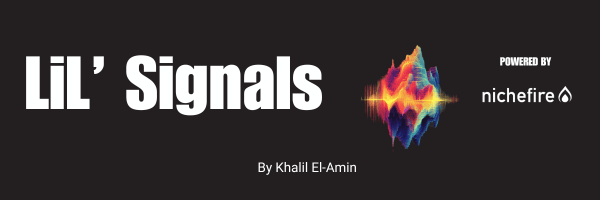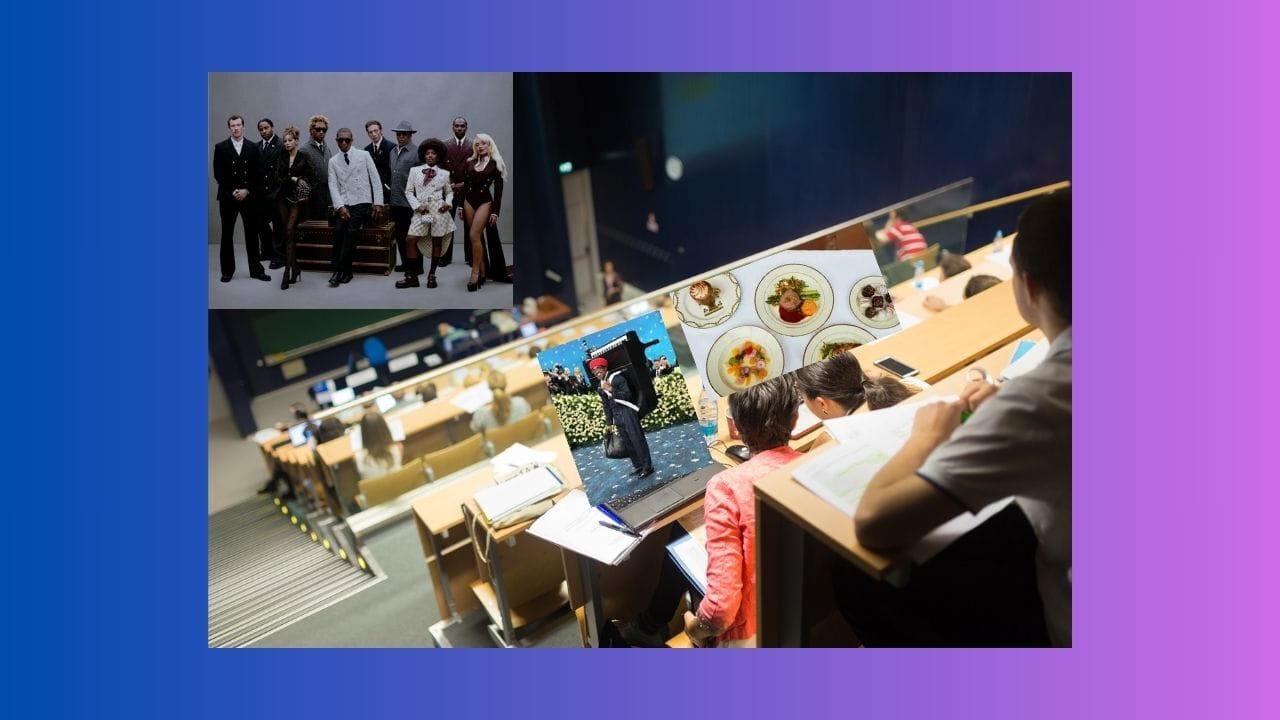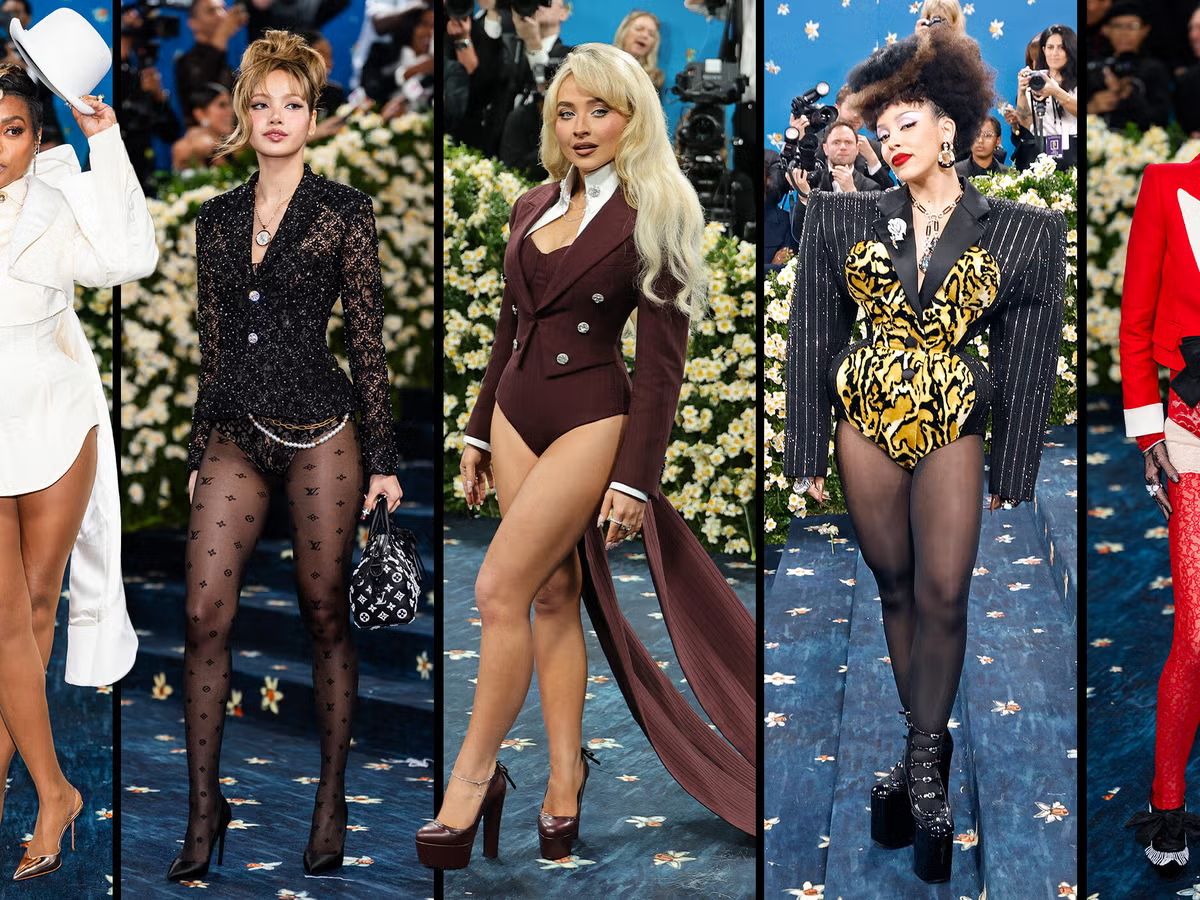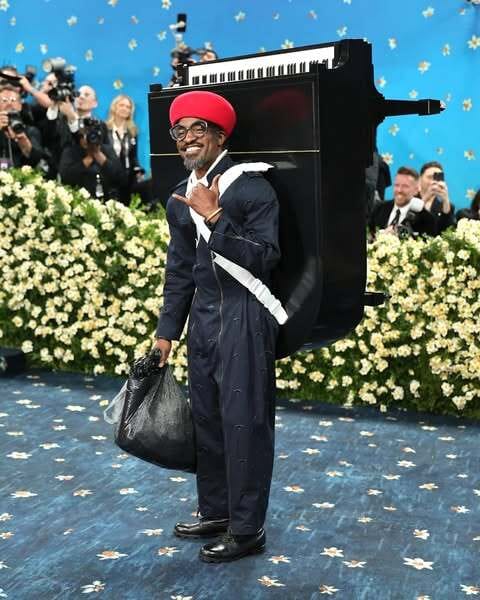- Lil' Signals
- Posts
- Lil’ Signals: Threads, Tuxes, and Takeout
Lil’ Signals: Threads, Tuxes, and Takeout
How High Fashion Is Redefining Snacking, Identity, and Brand Cool

👋🏽 Hey There
Lil’ Signals is your go-to newsletter for decoding the cultural currents shaping our world. Powered by Nichefire’s cutting-edge technology, we break down trends, tell compelling stories, and share actionable insights on how to tap into the power of cultural listening.
Stay ahead of the curve, one signal at a time.
In this edition, we’re shifting the spotlight from the red carpet to the dining table, and what’s happening in between.
At Nichefire, we’ve spent years tracking trends across industries, but some of the strongest signals show up in the spaces where categories collide. This year’s Met Gala was one of those moments. What looked like a fashion statement was actually a cultural ripple, with implications far beyond the runway.
Tailored elegance. Black dandyism. Redefined masculinity. And surprisingly? Subtle cues about how we eat, brand, and express identity.
This isn’t just a fashion trend. It’s a signal.
It’s a cue for marketers, designers, and product teams: culture doesn’t move in silos, it bundles. And in 2025, fashion is shaping food, not just through aesthetics, but psychology, packaging, and portion size.
That’s why in this week’s Cultural Listening 101, we’re spotlighting how FireSearch helps brands detect these cross-category shifts early, so you can design with context, not just color palettes.
Because in a world where velvet suits change snack habits, the smartest brands aren’t just watching, they’re reading the signals.
Let’s dive in!! 🎯
Table of Contents

StoryTime
Story Time: From the Met Gala to Your Menu:
How Fashion Is Reshaping Food, Identity, and What Comes Next

Every May, the Met Gala turns the Met Museum steps into fashion’s most iconic runway.
But it’s more than a red carpet flex; it’s a cultural signal.
What debuts there doesn’t stay there.
It spills into how we eat, shop, move, and express identity.
This year’s theme?
Black dandyism and tailored masculinity.
And while the outfits made headlines, the ripple effects are only beginning.
Let’s talk about what that means, for culture, for food, and brands paying attention.
What We Wear Shapes What We Eat
No metaphor here. This is backed by research.
There’s a real psychological phenomenon called clothes-food congruence, where what we wear actually influences what we eat.
Formal clothes activate associations with self-control and discipline, making people more likely to choose healthier foods.
Casual clothes?
They’re linked to comfort and indulgence.
In short: when we dress the part, we eat the part.
So if post-Gala fashion cues push people toward tailored suits, crisp whites, and elevated formality, don’t be surprised if comfort food takes a backseat to clean packaging, lean proteins, and portion control.
From double-breasted suits to velvet tuxedos and fedoras, the Gala leaned all the way into Harlem Renaissance elegance.
This wasn’t just fashion,it was cultural architecture.
And in a world where tailored looks influence self-control, expect food choices and packaging to follow suit: tighter, cleaner, sharper.
This is more than theory.
After last year’s Gala leaned into tweeds and monochrome, black surged to 37% of retail offerings.
White hit 14%.
Consumers wore fewer colors, and they ate with more intention.
Food Is Fashion Now
Fashion and food aren’t just overlapping, they’re syncing.
We use both to communicate identity.
Veganism isn’t just a diet; it’s a brand.
A fashion-forward Gen Z shopper might build their look around vintage finds and carry a beetroot smoothie like a statement piece.
These signals, stylistic, behavioral, and even edible, work together.
Even the pantsless trend, a playful, confident twist on underwear-as-outerwear, points to a shift toward body-forward, fashion-risky aesthetics that challenge food brands to keep pace with how and where their products are consumed.

For marketers, this means trends don’t live in silos.
They bundle.
And the bundle is what consumers buy into.
Platforms like Nichefire help brands spot these clusters early.
With real-time cultural mapping, you can track how a new fashion movement connects with rising food habits, lifestyle shifts, or emerging tribes, before they hit critical mass.
What the Gala Signals for F&B
If tailoring is in, food brands should take notes.
Here’s what’s coming down the runway:
Elegant on-the-go formats – People who dress clean want to eat clean. Portable, no-mess, and stain-resistant snacks? Big opportunity.
Lighter packaging aesthetics – White, cream, muted neutrals. If your product packaging aligns with post-Gala color palettes, it feels elevated by default.
Smaller, intentional portions – With GLP-1 meds and performance culture influencing appetite, consumers are eating less, but expecting more from every bite.
The takeaway? Function still matters. But form is culture.
Black Masculinity, Recentered
This year’s Met wasn’t just about fashion; it was about power, creativity, and visibility.
“Superfine: Tailoring Black Style” puts Black male identity front and center, reframing elegance as something personal, historic, and expressive.
From André 3000’s piano backpack to Usher and Stevie Wonder’s surprise duet, the night wasn’t just tailored, it was scored.
These musical elements reinforced the fusion of sound, style, and identity that defines modern Black culture and influence taste beyond the red carpet.
It’s a cultural recalibration, and it’s one brands should not miss.
Ask yourself:
Are we aligning our visual language, product design, or collaborations with this moment?
Are we thinking beyond representation and designing with intent?
Tailoring signals’ precision.
Right now, that precision isn’t just a trend, it’s a shift in who defines luxury, discipline, and taste.
Signal Watch: Food × Fashion Is Getting Loud
This crossover isn’t new, but it’s accelerating.
From McDonald’s streetwear collabs to edible runway pieces, brands find new ways to blur fashion and food.
And they’re doing it with scarcity, status, and storytelling.
Expect more:
Drop-style launches for limited-edition flavors.
Co-branded food/fashion events.
Streetwear that doubles as menu inspiration.
Food is no longer just fuel, it’s content, clout, and cultural capital.
Final Signal
The Met Gala is a moment.
But for trend-savvy brands, it’s also a message: style is strategy.
Identity is integrated.
And what people wear will always shape what they choose, from snacks to platforms to partnerships.
Of course, not all statements land.
The online backlash to Lisa’s Rosa Parks bodysuit reminds us: cultural alignment isn’t just aesthetic, it’s ethical, too.
Brands have to read the room, not just the runway.
The smartest brands don’t wait for proof.
They read the signals, test early, and move fast.
Because in today’s culture?
Relevance isn’t reactive. It’s predictive.
Stay curious. Stay connected. Stay ahead.
Let’s decode what’s next. Together.
Let’s keep the conversation going.
Let’s explore the power of culture, one signal at a time.

Cultural Listening 101
Cultural Listening 101: Spiky vs. Smooth — Why Trend Shape Matters
Every January, there’s a familiar cultural beat: people talking about habits, routines, and resolutions. “New Year, New Me” season kicks in hard. But look around, and you’ll notice not all trends follow this same pattern. Some explode and vanish. Others simmer, slowly reshaping behavior. At Nichefire, we track both, and knowing the difference is the key to turning cultural noise into strategy.
Two Types of Trend Behavior
We call them Spiky Trends and Smooth Trends.
Spiky Trends are sharp, seasonal surges, think habit trackers, Miracle Morning routines, or Atomic Habits. They peak fast, often around moments like New Year’s or Back-to-School. These are great for time-sensitive campaigns and real-time content pivots.
Smooth Trends, by contrast, grow steadily. They’re less dramatic but often more powerful over time. Take sustainability or home cooking, they don’t make a lot of noise all at once, but they move culture quietly and consistently. These inform long-term brand strategy, innovation, and positioning.
Why This Matters for Your Team
When a trend is spiky, you don’t want to miss the moment. But when it’s smooth, the opportunity lies in foresight, playing the long game.
In the Nichefire platform, we can visualize these differences. For example:
“Extreme Miracle Morning” spikes every January, like clockwork. The same goes for “Habit Tracker”.
Meanwhile, trends like “Cotton Candy Art” or “Chocolate Sculpting” have a slow, steady climb, no dramatic spikes, just consistent cultural pull.
Understanding the shape of a trend helps you decide:
Is this a moment to jump on now?
Or is this something we should be quietly building into our roadmap?
How Nichefire Helps
Nichefire’s predictive tech doesn't just detect what’s trending, it forecasts how it's moving. Whether you're in insights, marketing, or innovation, our platform can help you:
Differentiate between hype and habit
Time your campaigns with cultural precision
Align your brand with enduring values, not just momentary buzz
If you’re navigating culture and want to see what’s next before it hits your feed, let’s talk.
We’ll help you look around the corner, One signal at a time.
Reach out for a walkthrough and start making cultural listening work for you.
See you next week for another installment of Cultural Listening 101.
Thank you for subscribing to Lil’ Signals. If you enjoyed this post or know someone who may find it useful, please share it with them and encourage them to subscribe: https://lilsignals.beehiiv.com/p/lil-signals-decoding-culture-one-insight-at-a-time?draft=true

Content Engines
I want to see what You can create!
Got a cool AI-generated video?
Creative Experiment?
A bold Idea?
Share it with us!
Reply to this email with your best creations, and let’s see who’s leading the AI content revolution. 📤✨

Top Cultural Trends
Stay Ahead with Nichefire
In this new section, we’re diving into Nichefire’s unique tools to explore the top cultural trends shaping our world.
This week, we break down key insights from the Movements Matrix, spotlighting high-growth and emerging trends across 47 cultural categories
Spot Emerging Trends: Discover niche opportunities before they hit the mainstream.
Actionable Insights: Leverage cultural data to make faster, smarter decisions.
Comprehensive View: Analyze trends across 47 pre-trained cultural categories.
Lil’ Surfing 🌊
Just interesting articles I find on “The Internets” 😜

💬 Your journey into the world of cultural insights starts here!
Thank you for being part of the Lil’ Signals community. Together, we’ll decode the world, one signal at a time.



Reply